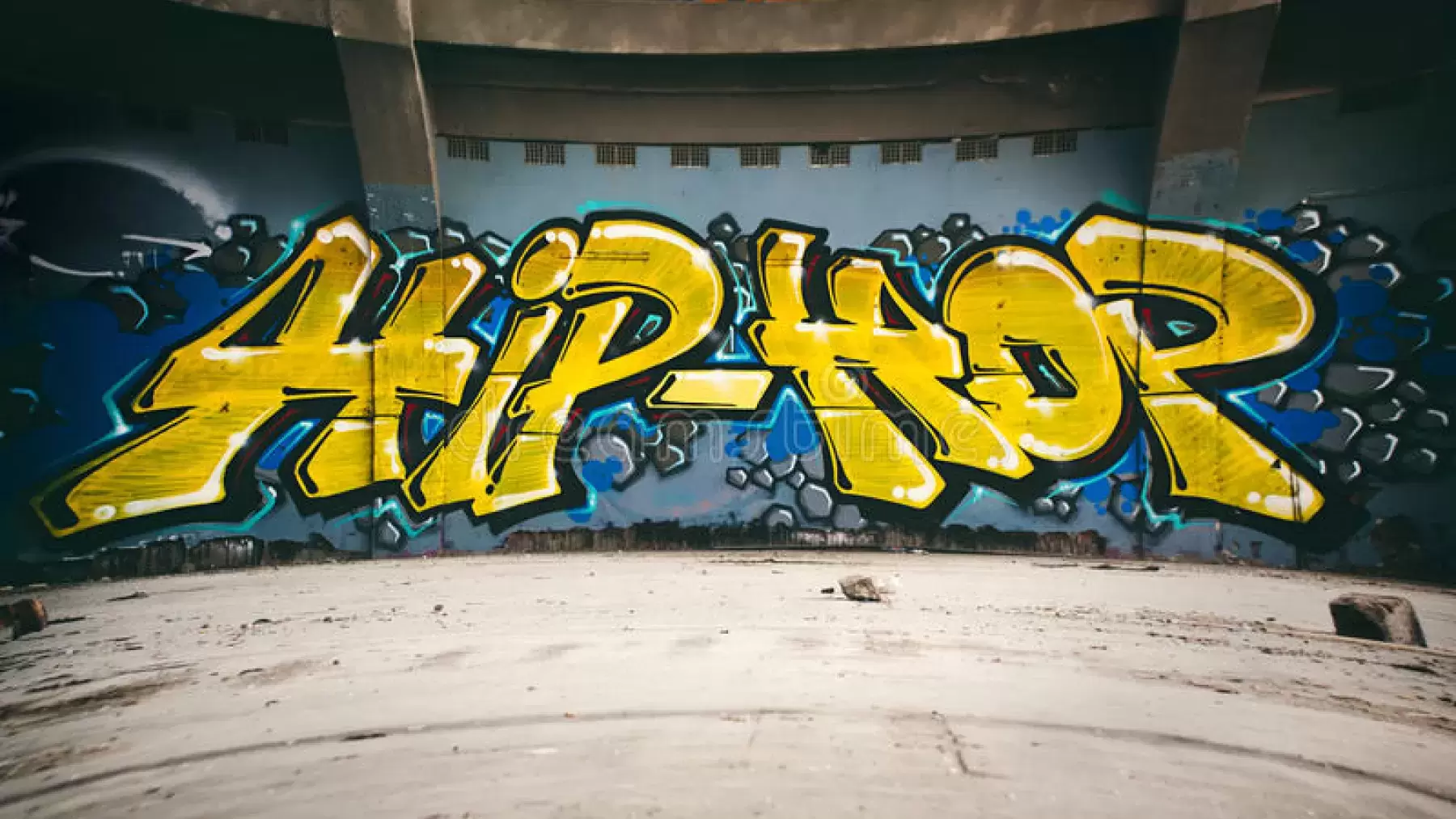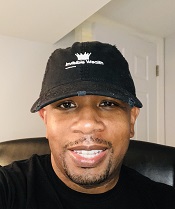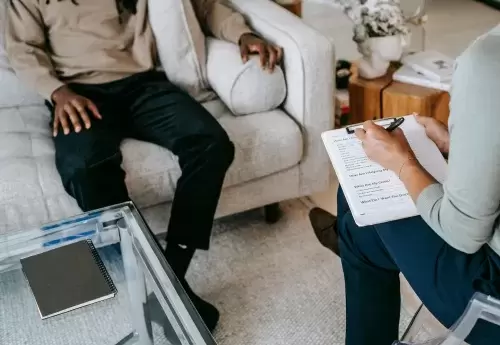
By Dr. Randolph D. Sconiers, DSW, LCSW, Owner of Mental-Hop
Many people will read the title of this article and never consider the idea that mental health could be connected to the influential culture of hip-hop, creating an engaging approach to helping people impacted by mental health issues. Saying that the combination of mental health and hip-hop can be utilized in helping people really doesn’t do this unlikely combination justice because when paired together, they can accomplish so much more. The moment the hip-hop supergroup Dead Prez stated, “it’s bigger than hip-hop” on their single “Hip-Hop” released in 2000, it was clear that the culture I was introduced to at the age of eight was so much more than just music.
My introduction to hip-hop started when my parents bought me my first boom box at the age of eight. I felt like the luckiest kid on my block because I finally had a way to listen to the music I loved so much. Hip-hop helped raise me. I loved that boom box so much, I put it on my bed and listened to DJ Red Alert, Mr. Magic/Marley Marl while falling asleep almost every night. The power of hip-hop and its impact on my mental health, thoughts, feelings, and behaviors was made very clear to me as a kid. As I listened to the music, I developed a sense of self, an understanding for language, and the ability to connect with others. Although I didn’t know what they were called back then, those pillars of hip-hop became a way of life for me. The legendary hip-hop MC, KRS-ONE proclaimed, “rap is something you do, hip-hop is something you live” and I have been living hip-hop ever since.
Hip-hop culture embodies five pillars that have made it the most influential movement of today. The pillars also make the connection between mental health and hip-hop much easier to understand. Hip-hop culture is founded on the MC (Mic Controller), the DJ, breakdancing, graffiti, and knowledge. These pillars are the foundational aspects of a culture that originated in the Bronx, New York in the 1970s. The hip-hop education scholar Dr. Christopher Emdin stated, “hip-hop was born out of the oppression” in the 1970s as a means for people to make sense of their environment but also provide the necessary healing spaces of an entire community. Many believe that the historical roots of hip-hop go back even further than its beginnings in the Bronx, and was birthed by the music, sounds, movements, and cultural/healing ceremonies in Africa.
That’s right, from Africa to the Bronx, NY to the world, hip-hop is the number one genre of music on a global level. In 2018, Nielsen reported that for the first time in history, hip-hop surpassed rock to become the most popular genre of music. So it only makes sense that the number one genre of music and iconic culture called hip-hop teams up with the vital aspect of our overall functioning called mental health. Here’s where things get magical. The marriage between mental health and hip-hop, which I call Mental-Hop is one that only an Oscar award-winning writer could put together. Honestly, it’s so much more. I truly believe the pairing of mental health and hip-hop is divine and cosmic, which leads to its undeniable superpower to help people heal.
I know, it sounds a little over-the-top but as I break down how the five pillars are aligned with mental health and wellness, things become strikingly clear. There’s nothing more original and innovative than hip-hop. It’s founded on authenticity, engagement, collaboration, and empowerment. As we seek to end the stigma and shame around mental health treatment, these aspects of hip-hop support and enhance our ability to demystify various aspects of mental health services and resources. Hip-hop artist Meek Mill recently stated, “we gotta find a way to make therapy cool for the black community.” His Instagram quote went on to receive numerous likes and reposts of support, which echoed the need to make one of the most recognizable aspects of mental health healing something engaging for a population of people that are not always afforded access to quality as well as culturally competent and sensitive mental health and wellness services. This is where hip-hop can take center stage. The pillars of hip-hop culture provide a practical and simplistic connection to mental health that can be easily understood but more importantly, impactful in helping people begin to take the lead in their healing and wellness journey. Let’s start the show, shall we?
The mental health & hip-hop connection: the power is in the pillars
Pillar #1: “The MC”
In hip-hop culture, the MC is the most recognizable aspect of hip-hop. The MC or the Mic Controller is the artist, creative, storyteller, rapper, poet, and writer that so eloquently expresses thoughts through words. Not only are the words important but the voice of the MC takes listeners on a sonic ride of thoughts, feelings, and ideas. An MC can dig deep into the depths of their souls and release feelings around a diverse group of topics--their childhood memories, relationships, partying, life’s journeys, and more. It gets even more compelling when you hear MCs speak of chronic community violence, trauma, social injustice, or battling depression. Hip-hop has not only been a way of those often unheard to have a voice, it has become a way for those experiencing some of the harshest realities in our society to cope, heal, and try to make sense of it all. Mental health is essentially the same in the way that treating those impacted by mental illness provides an opportunity to help people cope, heal, and make sense of it all to function at their optimal level. We can utilize the same skills and abilities that our favorite MCs use so effectively to empower those who are struggling with mental health conditions. Those struggling also deserve a voice that is heard, appreciated, and supported. Just like those of your favorite MCs. We can encourage people to share their stories through words in a marble notebook like MCs often use or by using their voices in therapy sessions, group counseling spaces, or just hanging out with friends. The MC just gets it out. There is power in releasing the feelings and thoughts we have inside. There is a heaviness that is lifted when a person shares their pain, perspective, and success. Not only is it liberating for the MC or person expressing those feelings, but it’s also empowering and inspiring for the listener. We need more MCs in mental health. Let’s call them Mental Health Creatives (MCs), people who are empowered to share, speak, and heal with the same courage as an MC who must take the stage and rock the mic. It’s scary of course but it’s so liberating and healing at the same time. Hip-hop culture is about acceptance and connection. Mental health should be the same. When paired together, nothing can stop an MC, Mic Controller or Mental Health Creative, from basking in the spotlight.
Pillar #2: “The DJ”
The music that sets the mood, creates the vibe, and activates the energy is all engineered by the DJ. The DJ stands for Disc Jockey but in hip-hop we refer to this person as the crowd controller. The DJ has a great responsibility in hip-hop culture. Some may say the DJ is the most important pillar in hip-hop culture because of their power to play the music and sounds that touch our ears. Hip-hop has always been mood music. The DJ can select certain songs to totally impact the mood of a room or even an entire arena. If a DJ wants the crowd to get more active, they may throw on “Where My Dogs At?” by the late, great DMX. If we are in a space of reflecting on relationships with our mothers, a DJ wouldn’t hesitate to play “Dear Mama” by the iconic Tupac Shakur. If we are talking resilience and going from surviving to thriving, then “Juicy” from The Notorious BIG is all we need. The bottom line is the DJ can move us into different emotional states with ease, which is part of the reason music is often utilized as a coping tool for those experiencing any type of mental or emotional distress. People recognize the power and ability that hip-hop has to impact their mood in a positive way and essentially become their personal DJs. Whether in the car, a bedroom, school, or at the office. People are putting on their favorite songs and taking their pain away. Nothing supports this more than the invention of the playlist. The playlist allows someone to access a group of songs categorized by mood, genre, emotional state, location, or whatever title they decide to give it. There’s freedom and power in choice. The DJ’s playlist is very personal and is kind of like a personal music coping list for someone to utilize when going through a difficult time. We may choose songs for relatability, which is why we may throw on the angriest hip-hop song when we’re feeling angry. Maybe listening to that sad hip-hop song helps us to see that we are not alone when it comes to grieving or depression. It can be that motivational and inspiring hip-hop song that lifts our moods and restores hope for us on our healing journey. Music is powerful and having the ability to choose songs that can help us get through difficult times is empowering. Hip-hop DJs are a great example of how mental health can utilize the power of music. Take a day and create your personal mood-elevating playlist. Remember there’s power in choice. It’s your turn to change the mood and create the vibe.
Pillar #3: “Breakdancing”
The pillar known as breakdancing is an art form like nothing anyone has ever seen. Also known as breaking, this style of dance is where many of today’s viral Instagram and TikTok posts originated. Breaking encompasses a level of technical ability, rhythm, athleticism, and style. It is movement and the physical aspect of hip-hop culture that birthed so many dance crazes, movements, and even global competitions. The authenticity and rawness of breaking has been captured in movies throughout history, whether you’re talking about the legendary hip-hop films, “Breakin’” or “Beat Street,” both released in 1984. Breakdancing has a historical significance in our society because it birthed many of the dance competitions we see on TV and in movies today. Breaking also makes for a great connection to mental health and wellness. That is the idea of physical movement and its positive impact on our mental health. According to an article by the American Psychological Association (2011, APA), physical activity positively impacts mood, can alleviate chronic depression, and generally makes us feel good. I am in no way suggesting that someone with serious mental illness start spinning on their head or doing 360-degree windmill spins on the ground, but there is something to the idea of combining movement and a healthy wellness regimen. The idea of movement and music together make for a sound combination of tools to utilize for anyone who is treating a mental illness or anyone who is focused on their mental health. Breaking is intense but it has always been about feeling good. It’s only right that we find more spaces to get people moving again, just like the breakers did in the 1970s to dance away their pain, to party, and to feel good.
Pillar #4: “Graffiti”
That’s right, the spray-painted walls, buildings, and trains were often criticized and have been recognized as a meaningful art form. Graffiti has always been just that for us hip-hop heads. It was another form of expression, communication, and exploration of identity. Graffiti artists are the geniuses that birthed paintings, logos, CD covers, and print illustrations. Utilizing spray paint, graffiti artists would tag (spray paint) their names, images, and work on buildings throughout the Bronx, NY and beyond in the 1970s. Hip-hop artist Fat Joe, who hails from the Bronx, NY, has spoken numerous times about the impact graffiti has had on his life. In 2012, the legendary Bronx rapper stopped at the home of another famous hip-hop artist, Lil Wayne, to show off his graffiti skills. Both artists celebrated the work by showing it to the public on social media. Graffiti is the epitome of self-expression and creativity, which are both essential aspects of healing and wellness. Sigmund Freud, who some have referred to as the father of psychology, stated, “Unexpressed emotions will never die. They are buried alive and will come forth later in uglier ways.” Graffiti was utilized by many to express emotions in healthy ways. It was done not only to avoid uglier days but to highlight the beauty that exists in all of us. Although criticized and outlawed in the past, graffiti has gained global acceptance as a highly recognizable art form. Many therapists, practitioners, and mental health advocates encourage those they serve to explore their creative outlets. Whether it’s painting or coloring that a person chooses to participate in for creative stimulation, that same release is synonymous with the feeling graffiti artists of the past experienced in those artistic spaces of the 70s. Mental health needs more art and art needs mental health. Both create the spaces for people to self-express, grow, and heal.
Pillar #5: “Knowledge”
The Hip-Hop culture pillar of knowledge is so important in making the connection between hip-hop and mental health. When I created the Mental-Hop Program in 2017, it was really born out of this idea to utilize the influential power of hip-hop to engage, educate, and empower young people around the importance of mental health. It’s that knowledge or information, which allows for a greater understanding of mental health and wellness. By educating people about the historical significance of hip-hop culture and its origins, we can bring people closer to a greater understanding of mental health and its importance for our daily functioning. The pillar of knowledge allows us to take hip-hop culture into spaces of academia, therapy, politics, community service, and more. All with the goal of helping people feel better, improving their experiences, restoring families, and helping communities heal. Hip-hop culture was born in the streets of the Bronx, NY but it was too powerful to stay in one place. Its global influence makes it an essential resource for educating people about the importance of mental health, healing, and wellness. Hip-hop knowledge is engaging, which decreases stigma and shame because it’s founded on connecting. It’s organically inviting due to authenticity and practicality. You don’t need much to live in this culture called hip-hop. All that’s asked is that you respect it and stay true to it. It sounds like the same request we have for mental health--respect the importance of it and stay true to creating more spaces for people to cope, heal, and grow when addressing their mental health.
Mental health and hip-hop culture are the super-friends we need for today. When they team up, their reach is undeniable. Whether it’s reaching marginalized groups whose voices around mental health issues are seldom heard or highly stigmatized groups like Black and Brown men who may suffer from a lack of emotionally safe spaces to express their feelings, hip-hop culture provides an engaging opportunity to begin to heal. Hip-hop culture is the inviting door of a safe house called mental health.
 |
Dr. Randolph D. Sconiers, DSW, LCSW (Dr. S) is a Doctor of Social Work and a NJ Licensed Clinical Social Worker. Dr. Sconiers is a mental health therapist in private practice with over 20 years of experience in mental health therapy, mental health education, and advocacy. As a mental health therapist, Dr. Sconiers has been featured in The Huffington Post, been recognized by the National Association of Social Workers (NASW) and has appeared numerous times on NYC’s Hot97/Fox5’s Street Soldiers Show with Lisa Evers for his work in the areas of mental health and hip-hop culture! Dr. Sconiers is the Owner and Creator of Mental-Hop, which focuses on mental health education through hip-hop culture. Mental-Hop partners with various organizations including New Jersey’s Juvenile Justice Commission and Simon Youth Academy of New Jersey to educate young people through his Mental-Hop Symposiums. Dr. Sconiers is also an Adjunct Professor for the Graduate School of Social Work at Kean University in Union, New Jersey.




